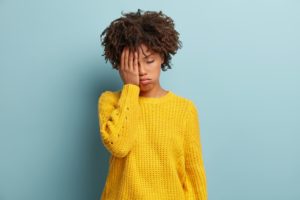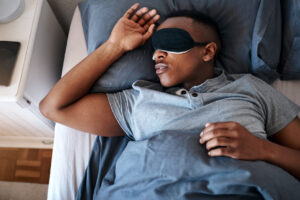Narcolepsy Treatment
Narcolepsy is a disorder in which the sleep-wake cycle is significantly altered. Its central symptom is excessive daytime sleepiness (EDS), which may involve falling asleep involuntarily, even while eating or driving.
Because narcolepsy can have profound day-to-day consequences, treatment is typically recommended to improve overall wellness. Understanding the goals of treatment, the types of therapies, and their potential benefits and downsides can help people with narcolepsy work with their doctors to receive the most out of their medical care.
Is Narcolepsy Curable?
Narcolepsy is not curable. It is considered to be a lifelong condition. For the majority of patients, symptoms stay relatively stable over time. A significant number see symptom improvement or, in some rare cases, remission as they age.
What Is the Goal of Narcolepsy Treatment?
Although narcolepsy is not curable, it is treatable. The goals of treatment are to reduce symptoms, ensure patient safety, and improve quality of life.
For any patient, treatment can be tailored to match their age, overall health, symptoms, and individual preferences. Working with a doctor experienced in treating narcolepsy can enhance the ability to optimize treatment for any specific person.
What Are the Types of Treatment for Narcolepsy?
Treatment for narcolepsy can be broken down into two categories:
- Behavioral approaches employ changes in lifestyle and daily habits to manage symptoms and reduce the likelihood of other physical and emotional challenges that often affect people with narcolepsy.
- Medications can be prescribed to address symptoms. The use of medications is known as pharmacotherapy.
For most people with narcolepsy, treatment involves both behavioral approaches and medications. A combination of therapies frequently decreases excessive daytime sleepiness but a recent survey finds that it doesn’t eliminate it completely in most patients . Sometimes people don’t consistently adhere to the treatment plan because of continued symptoms or medication side effects.
Patients with NT1 and NT2 frequently have similar symptoms and, as a result, similar treatments. A core difference, though, is that people with NT2 never require therapy for cataplexy because that symptom only occurs in NT1.
Behavioral Approaches
Behavioral elements of narcolepsy treatment involve lifestyle strategies that are meant to combat excessive daytime sleepiness, prevent accidental injuries, and fortify physical, mental, and emotional health. People with narcolepsy can adapt these non-medical treatment methods to fit their individual situation.
Planned Naps
Scheduled napping can help people cope with daytime drowsiness. After a brief period of sleep, most people with narcolepsy wake up refreshed. Planned naps can heighten alertness at key parts of the day and prevent them from falling asleep involuntarily. A quick nap may be beneficial before situations requiring alertness, especially driving.
Budgeting time for naps may require working with school or work to put special accommodations in place.
Sound Sleep Hygiene
People with NT1 and NT2 frequently have poor nighttime sleep. Although falling asleep is rarely a problem, multiple awakenings can cause sleep fragmentation that reduces sleep quantity and quality. Poor sleep at night can exacerbate daytime sleepiness.
Good sleep hygiene, which involves daily habits as well as the sleep environment, can make it easier to sleep well at night. Practical tips to improve sleep routines for people with narcolepsy include:
- Keep a consistent bedtime and wake time: A stable sleep schedule can ensure that enough time is budgeted for rest and helps habituate the body to sleeping at set times, including at night.
- Avoid alcohol and sedatives: Alcohol and many other substances with a sedating effect interfere with sleep cycles and negatively affect sleep quality. Daytime use of these substances can also worsen EDS.
- Avoid caffeine late in the day: Caffeine can linger in the body for hours and has a stimulant effect that can disrupt nighttime sleep.
- Create a sleep-friendly bedroom: Sleep can be disturbed by excess light and sound, so the ideal sleep setting is dark and quiet. Blackout curtains, a sleep mask, and a white noise machine are examples of accessories that help reduce bothersome disruptions. Setting the thermostat to a pleasant temperature, having a supportive mattress, and using comfortable bedding can support good sleep as well.
- Limit the use of electronic devices at night: Cell phones, laptops, and tablets tend to keep the brain alert and make it harder to sleep well. These devices can also emit blue light that may interfere with the body’s internal clock.
Accident Prevention and Safe Driving
People with narcolepsy are at a higher risk of accidents while driving, operating heavy machinery, or engaging in other safety-critical activities. Accidents can be life-threatening, making the prevention of involuntary sleep an important element of narcolepsy care.
Excessive daytime sleepiness tends to be worse during monotonous situations, so long drives in repetitive settings should be avoided. People with narcolepsy are generally advised to avoid work that requires extended driving. Well-timed naps may enable safer driving for short distances.
The risk of accidents can depend on the severity t of excessive daytime sleepiness as well as the presence of other symptoms, like cataplexy. People with narcolepsy should talk with their doctors to assess whether it’s safe for them to drive and discuss specific approaches to reduce accident risk.

Finding Support
Receiving support from family, friends, other people with narcolepsy, and a mental health professional can promote emotional wellness.
The symptoms of narcolepsy can cause feelings of social stigma that may lead to withdrawal and isolation. Mental health disorders like depression and anxiety occur more frequently in people with narcolepsy.
Online or in-person support groups can help people with narcolepsy connect with others with the disease. Check-ins with a mental health counselor can prevent, identify, and treat mood and anxiety disorders.
Healthy Diet
Eating a healthy diet is important for everyone, but it takes on added importance for people with narcolepsy because they have an elevated risk of obesity.
The timing of meals is important as well. Eating too late at night may interfere with normal digestion and is associated with sleep disruptions . If late dinners or snacks are heavy or spicy, they may cause acid reflux or indigestion that can worsen sleep quality.
It is also usually recommended that people with narcolepsy avoid big and heavy meals before driving or other activities that require alertness.
Daily Exercise
Getting regular exercise is important to maintaining a healthy body weight and helps combat cardiovascular problems , such as high blood pressure, which are common in people with narcolepsy. Physical activity is also associated with improved mental health and better sleep .
Avoid Smoking
Exposure to tobacco smoke has been associated with lower quality sleep , and smoking cigarettes can contribute to cardiovascular and other health problems.
Medications
Most patients with narcolepsy take one or more prescription medications designed to reduce their symptoms. These treatments can have benefits as well as side effects and interactions with other medications. A doctor can best describe the benefits and risks of any medication and determine the optimal dose and schedule for taking it.
Treatments for Excessive Daytime Sleepiness
To treat narcolepsy, doctors usually start with one drug to see how well it works for a specific patient. The dosage or timing of doses may be changed as needed, or the doctor may recommend switching medications if the first is not working or well-tolerated.
Wakefulness-promoting drugs have a stimulant effect that may reduce excessive daytime sleepiness (EDS) and make it easier to stay focused and alert during the day. Most drugs for EDS can be used for both NT1 and NT2.
Modafinil is often the first drug prescribed for narcolepsy. Research studies have shown that it can improve alertness and is well-tolerated by most patients. Modafinil can interfere with hormonal birth control and, rarely, can cause a serious skin rash. The most common side effects are headache, nausea, appetite loss, and nervousness. Armodafinil is a chemically similar drug with roughly equivalent benefits and risks.
Methylphenidate is the most frequently prescribed of several amphetamine-like drugs for narcolepsy. It has a track record of boosting alertness but often has more side effects than modafinil. Loss of appetite, irritability, and difficulty sleeping at night are the most common adverse reactions. While there are reports of methylphenidate being detected as amphetamine on a drug screen, most urine drug tests can distinguish between them .
Pitolisant is a newer drug, approved by the FDA in 2019, which promotes wakefulness through its effect on histamines. It has shown benefits for reducing excessive daytime sleepiness in both NT1 and NT2 . Like modafinil, pitolisant can affect birth control. In research studies, the side effects reported most frequently were insomnia, nausea, and headache.
Solriamfetol is another drug approved in 2019 that has been found to improve EDS. It works by affecting chemicals in the brain called dopamine and norepinephrine. Solriamfetol has not been directly compared to other stimulants in studies but appears to have a comparable effect. It does not interfere with birth control. Headache, loss of appetite, nausea, and insomnia are among the most likely side effects.
Treatments for Disrupted Nighttime Sleep
Treating fragmented sleep in people with narcolepsy can be challenging. Typical prescription sleep medications, such as benzodiazepines or “Z drugs,” have a strong sedative effect that can persist into the morning, worsening daytime EDS. As a result, while these drugs may be prescribed for people with narcolepsy, they are usually prescribed with caution.
Sodium oxybate is a drug that can improve nighttime sleep in people with narcolepsy while also reducing cataplexy. After several weeks of use, it can also decrease EDS. It is a central nervous system depressant that can have serious side effects , including seizures and impaired breathing and mood. The most common side effects are nausea, dizziness, severe sleepiness, and vomiting.
Treatments for Cataplexy
People with NT1 experience episodes of cataplexy in which there is a partial or total loss of muscle control for a period of seconds to minutes. Certain medications can decrease the likelihood and frequency of these episodes.
Sodium oxybate is one of the most effective medications for treating cataplexy. Unfortunately, it can have significant side effects. When well-tolerated, other benefits of sodium oxybate are that it can improve nighttime sleep and reduce EDS in addition to treating cataplexy.
Pitolisant, which promotes wakefulness, has also been found to have a beneficial effect on cataplexy in people with NT1. Various types of antidepressant medications may be used for cataplexy, but side effects may limit their usefulness.
Medications that reduce cataplexy often decrease the frequency of sleep paralysis and sleep-related hallucinations, which are other symptoms associated with narcolepsy.
Treatment of Narcolepsy in Children
Even though narcolepsy can occur at a young age, few research studies have been done to identify the optimal treatment in children and adolescents. Because of this, treatment for childhood narcolepsy tends to parallel treatment in adults. Dose modifications may be necessary, and the American Academy of Pediatrics advises doctors to conduct a cardiovascular evaluation before prescribing stimulants to children.
Treatment of Narcolepsy During Pregnancy
There is little data available to help guide the treatment of narcolepsy in women who are pregnant, actively trying to get pregnant, or breastfeeding. The safety of narcolepsy drugs for a woman or her baby is not well-known. In one survey, most sleep specialists said that they usually advise women not to take these drugs during conception, pregnancy, or lactation although further studies are needed in this area.
Women who stop taking medications for narcolepsy before, during, or after pregnancy may need to employ additional behavioral approaches to manage and cope with increased narcolepsy symptoms.

Still have questions? Ask our community!
Join our Sleep Care Community — a trusted hub of sleep health professionals, product specialists, and people just like you. Whether you need expert sleep advice for your insomnia or you’re searching for the perfect mattress, we’ve got you covered. Get personalized guidance from the experts who know sleep best.
References
16 Sources
-
Almeneessier, A. S., Alballa, N. S., Alsalman, B. H., Aleissi, S., Olaish, A. H., & BaHammam, A. S. (2019). A 10-Year longitudinal observational study of cataplexy in a cohort of narcolepsy type 1 patients. Nature and Science of Sleep, 11, 231–239.
https://pubmed.ncbi.nlm.nih.gov/31695532/ -
Büchele, F., Baumann, C. R., Poryazova, R., Werth, E., & Valko, P. O. (2018). Remitting narcolepsy? Longitudinal observations in a hypocretin-deficient cohort. Sleep, 41(9).
https://pubmed.ncbi.nlm.nih.gov/29868885/ -
Maski, K., Steinhart, E., Williams, D., Scammell, T., Flygare, J., McCleary, K., & Gow, M. (2017). Listening to the patient voice in narcolepsy: Diagnostic delay, disease burden, and treatment efficacy. Journal of Clinical Sleep Medicine, 13(3), 419–425.
https://pubmed.ncbi.nlm.nih.gov/27923434/ -
Pérez-Carbonell, L., Lyons, E., Gnoni, V., Higgins, S., Otaiku, A. I., Leschziner, G. D., Drakatos, P., d’Ancona, G., & Kent, B. D. (2020). Adherence to wakefulness promoting medication in patients with narcolepsy. Sleep Medicine, 70, 50–54.
https://pubmed.ncbi.nlm.nih.gov/32197224/ -
Chung, N., Bin, Y. S., Cistulli, P. A., & Chow, C. M. (2020). Does the Proximity of Meals to Bedtime Influence the Sleep of Young Adults? A Cross-Sectional Survey of University Students. International journal of environmental research and public health, 17(8), 2677.
https://pubmed.ncbi.nlm.nih.gov/32295235/ -
Nisar, M., Mohammad, R. M., Arshad, A., Hashmi, I., Yousuf, S. M., & Baig, S. (2019). Influence of dietary intake on sleeping patterns of medical students. Cureus, 11(2), e4106.
https://pubmed.ncbi.nlm.nih.gov/31058000/ -
U.S. Department of Health and Human Services. (2018). Physical Activity Guidelines for Americans (2nd edition)., Retrieved February 14, 2021, from
https://health.gov/sites/default/files/2019-09/Physical_Activity_Guidelines_2nd_edition.pdf -
Kline C. E. (2014). The bidirectional relationship between exercise and sleep: Implications for exercise adherence and sleep improvement. American journal of lifestyle medicine, 8(6), 375–379.
https://pubmed.ncbi.nlm.nih.gov/25729341/ -
Zandy, M., Chang, V., Rao, D. P., & Do, M. T. (2020). Tobacco smoke exposure and sleep: Estimating the association of urinary cotinine with sleep quality. Health Promotion and Chronic Disease Prevention in Canada: Research, Policy and Practice, 40(3), 70–80.
https://pubmed.ncbi.nlm.nih.gov/32162509/ -
Pérez-Carbonell, L., & Leschziner, G. (2018). Clinical update on central hypersomnias. Journal of Thoracic Disease, 10(S1), S112–S123.
https://pubmed.ncbi.nlm.nih.gov/29445535/ -
Sonka, K., & Susta, M. (2012). Diagnosis and management of central hypersomnias. Therapeutic Advances in Neurological Disorders, 5(5), 297–305.
https://pubmed.ncbi.nlm.nih.gov/22973425/ -
Breindahl, T., & Hindersson, P. (2012). Methylphenidate is distinguished from amphetamine in drug-of-abuse testing. Journal of Analytical Toxicology, 36(7), 538–539.
https://pubmed.ncbi.nlm.nih.gov/22802574/ -
Thorpy, M. J. (2020). Recently approved and upcoming treatments for narcolepsy. CNS Drugs, 34(1), 9–27.
https://pubmed.ncbi.nlm.nih.gov/31953791/ -
United States Food and Drug Administration. (2020). XYREM: Prescribing information. FDA.gov. Accessed February 14, 2021 from
https://www.accessdata.fda.gov/drugsatfda_docs/label/2018/021196s030lbl.pdf -
Wolraich, M. L., Hagan, J. F., Allan, C., Chan, E., Davison, D., Earls, M., Evans, S. W., Flinn, S. K., Froehlich, T., Frost, J., Holbrook, J. R., Lehmann, C. U., Lessin, H. R., Okechukwu, K., Pierce, K. L., Winner, J. D., Zurhellen, W., & Subcommittee on Children and Adolescents with Attention-Deficit/Hyperactive Disorder. (2019). Clinical practice guideline for the diagnosis, evaluation, and treatment of attention-deficit/hyperactivity disorder in children and adolescents. Pediatrics, 144(4).
https://pubmed.ncbi.nlm.nih.gov/31570648/ -
Thorpy, M., Zhao, C. G., & Dauvilliers, Y. (2013). Management of narcolepsy during pregnancy. Sleep Medicine, 14(4), 367–376.
https://pubmed.ncbi.nlm.nih.gov/23433999/







